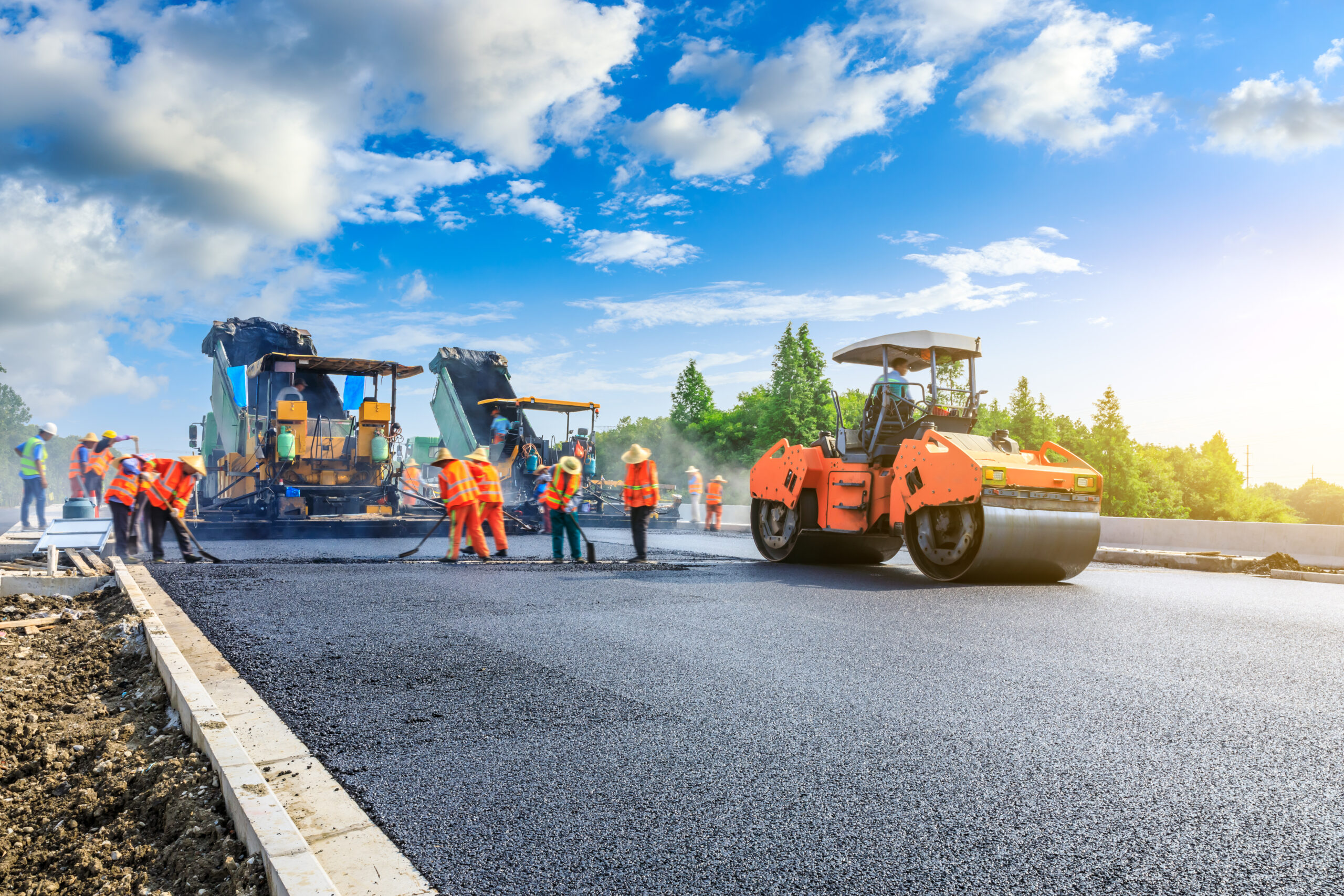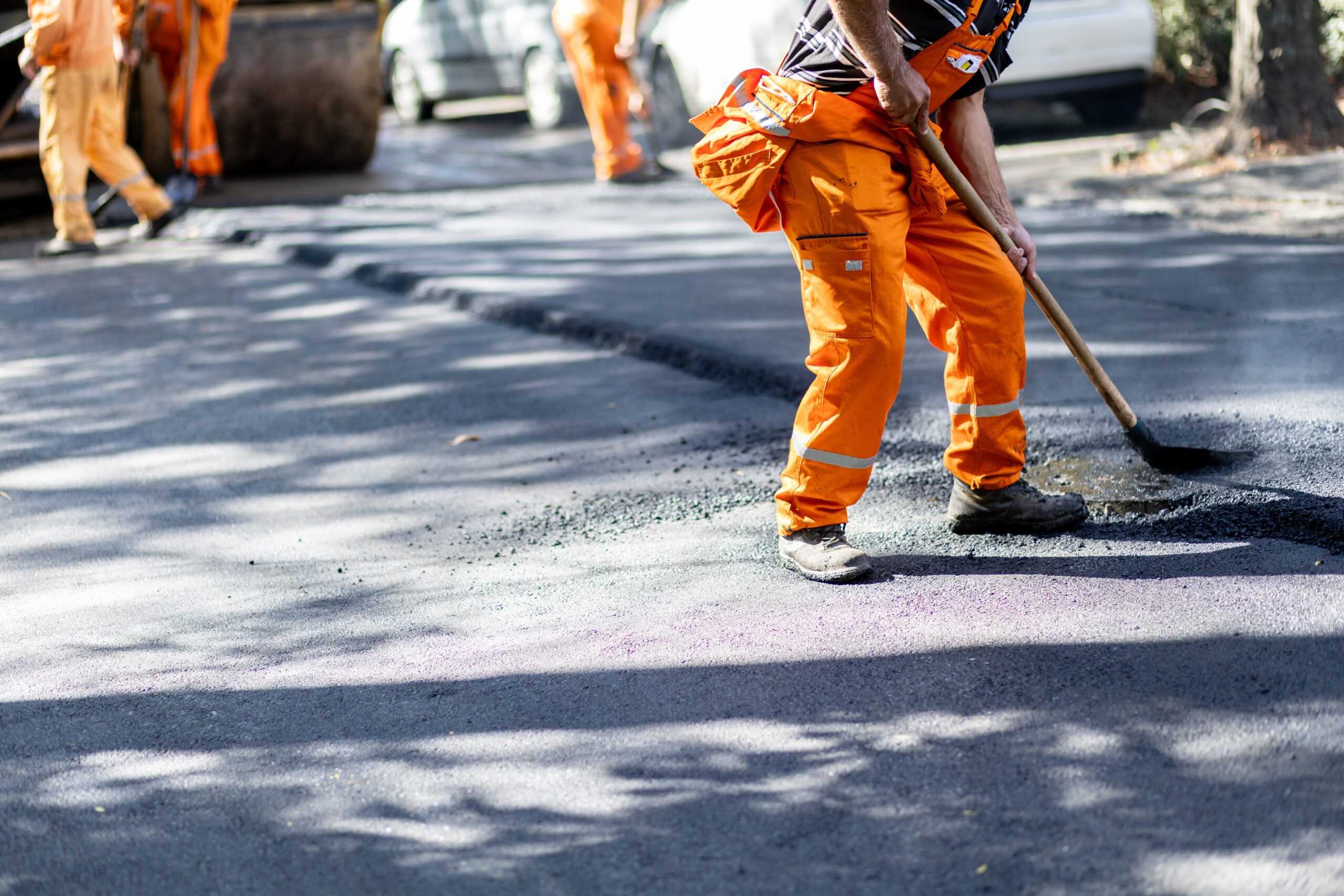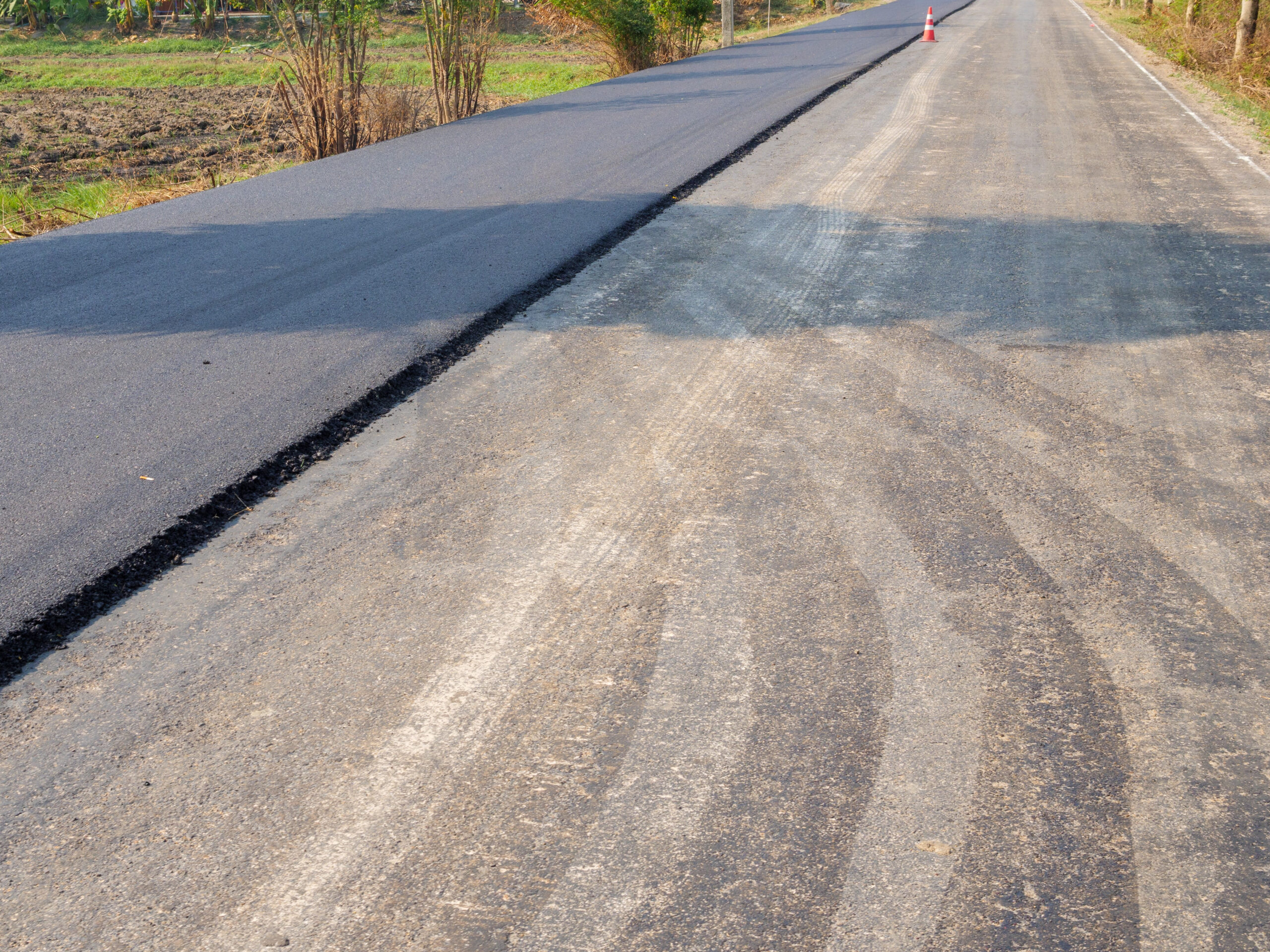Homeowners, property managers, and business owners often face the same question: Should you sealcoat your asphalt or invest in resurfacing? While both processes extend the life of a driveway, road, or parking lot, they serve different purposes and are not interchangeable
Roughly 93 percent of paved roads in the US are asphalt, so picking the right maintenance method matters for almost every paved surface you own or manage.
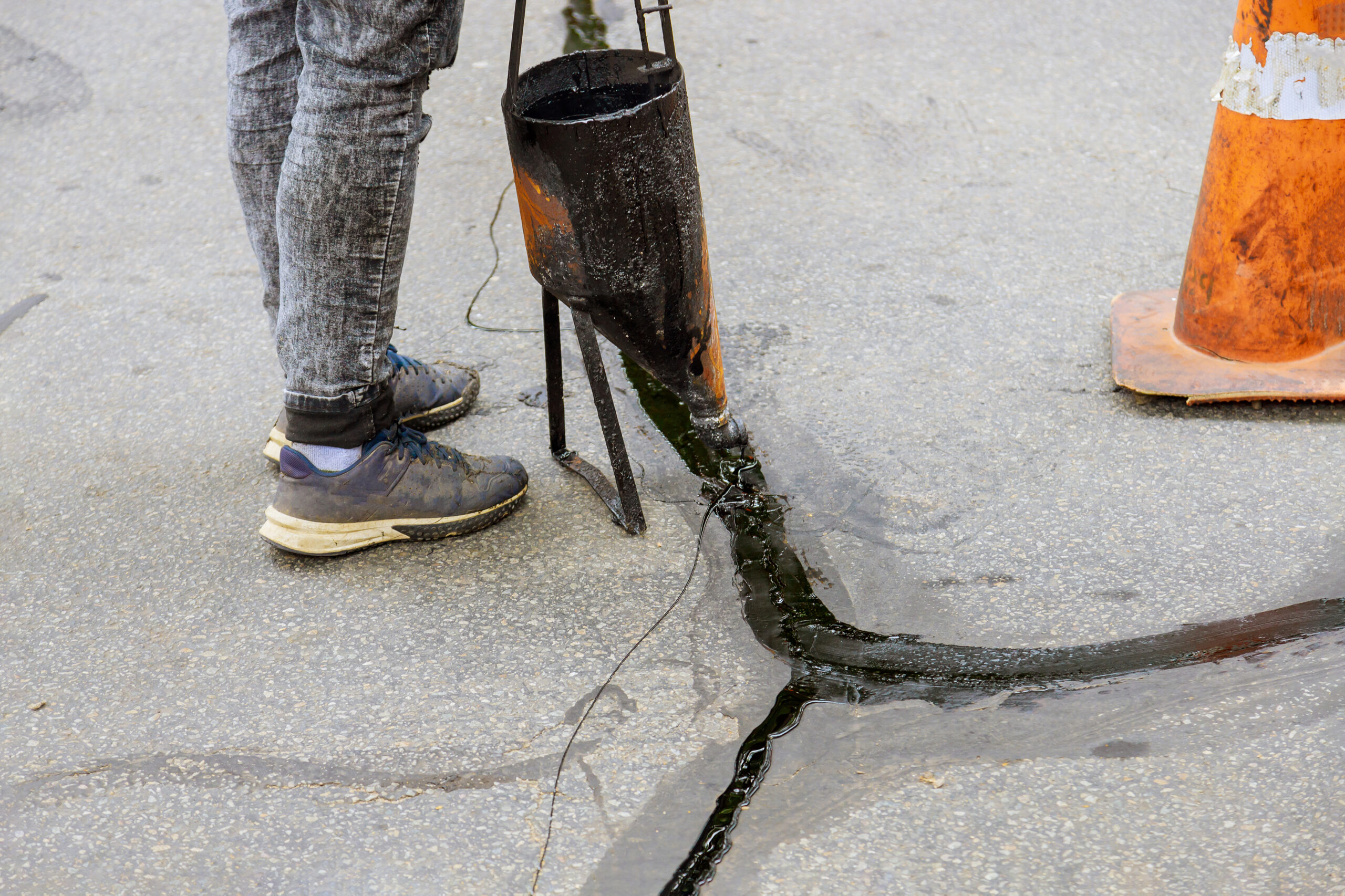
Sealcoating is a preventive treatment that focuses on protecting and preserving your existing surface. Resurfacing, however, is a corrective repair process designed to restore structural strength and create a smoother, more durable driving surface. Knowing when to choose one over the other can save thousands of dollars over time and prevent major headaches in the future. For budgeting, it helps to know sealcoating vs. repaving which saves more.
In this detailed guide, we will break down exactly what sealcoating and resurfacing involve, when each is appropriate, how much they cost, and what kind of results you can expect. This blog also covers environmental considerations, timing recommendations, and expert tips to help you confidently maintain your pavement.
What Is Sealcoating and How Does It Protect Asphalt?
Sealcoating is a liquid emulsion, either asphalt-based or coal tar-based, that is applied in thin layers across a clean asphalt surface. Once cured, this coating hardens into a tough, weather-resistant barrier. It prevents UV rays from breaking down the asphalt binders and stops moisture from seeping into the base layers.
It is one of the most important preventive measures you can take to extend the life of your asphalt. By adding a protective layer over the surface, sealcoating shields the pavement from the harsh effects of sunlight, rain, snow, oil, salt, and oxidation. This thin, jet-black coating restores the rich color of your driveway or parking lot, instantly improving curb appeal while also reducing surface wear.
Sealcoating is not a fix for deep cracks or structural problems, but it is an essential part of routine asphalt maintenance. When done every two to three years, it can double the lifespan of your pavement and save you from costly repairs in the future. If your surface shows small fractures, timely crack sealing prevents asphalt damage.
In fact, research by the University of Wisconsin LTAP program finds that a proper seal coat can add roughly five to eight years of service life to a pavement section when used as part of a preservation program.
How Sealcoating Works
The process begins with thoroughly cleaning the asphalt to remove dirt, oil, and debris. Small cracks are filled, and any oil spots are primed to ensure proper adhesion. Contractors then use squeegees, brushes, or sprayers to apply the sealant evenly across the surface. Typically, two coats are applied for maximum protection. After the sealcoat cures, it leaves a smooth, black finish that makes the pavement look brand new.
Best Use Cases and Ideal Conditions
Sealcoating is best suited for asphalt that is still structurally sound but beginning to show signs of surface aging. Fading color, small cracks, or light surface wear are all indicators that it is time to schedule a sealcoating service. Ideally, sealcoating should be done every two to three years, and more frequently for high-traffic areas, such as commercial parking lots. Performing sealcoating early and consistently prevents damage from escalating and delays the need for resurfacing or full replacement.
What Is Resurfacing and When Does It Restore Pavement?
Resurfacing, also known as asphalt overlay, is the process of adding a new layer of hot-mix asphalt (typically between 1.5 and 3 inches thick) over the existing surface. Unlike sealcoating, resurfacing actually rebuilds the top portion of the pavement, correcting structural issues and improving overall performance.
Resurfacing is a heavier, more extensive treatment than sealcoating. Instead of simply adding a protective layer, resurfacing involves laying down a new asphalt layer over your existing pavement to restore both appearance and strength. This process is ideal for pavements that have suffered moderate damage but do not yet require a complete replacement.
Studies and agency reports indicate that overlays typically add approximately 10 to 15 years of service life. Research has found an average overlay life of around 14.8 years, with thin overlays often extending the useful life by 5 to 12 years.
Resurfacing Process and Typical Thickness
The process begins with a detailed inspection to determine if milling is necessary. It involves milling, which removes the top layer of damaged asphalt to create a smooth, level surface for the new overlay. Contractors repair potholes, cracks, and base issues before installing the new asphalt layer.
The fresh asphalt is spread evenly using paving machines and then compacted with heavy rollers to create a smooth finish. This added thickness restores strength and improves safety, making resurfacing a practical choice for heavily trafficked roads and parking lots.
Best Use Cases and Ideal Conditions
Resurfacing is ideal for pavement that shows extensive cracking, potholes, drainage problems, or rutting but has a stable foundation. It is often the best option for aging pavement in commercial areas where aesthetics and safety are a priority. Because resurfacing is a major project, it is typically done once every 10 to 15 years, depending on weather conditions and traffic levels.
Sealcoating vs. Resurfacing Comparison: A Quick Comparison Table
Here’s a comparison table between sealcoating and resurfacing side by side, which helps highlight their differences so you can make an informed choice:
| Feature | Sealcoating | Resurfacing |
| Purpose | Preventive maintenance and surface protection | Structural repair and surface renewal |
| Layer Added | Thin protective coat | 1.5–3 inches of asphalt overlay |
| Best For | Asphalt with minor cracks or fading | Pavement with moderate damage or rutting |
| Frequency | Every 2–3 years | Every 10–15 years |
| Cost | $0.15–$0.25 per sq. ft. | $2–$6 per sq. ft. |
| Downtime | 24–48 hours | 2–7 days depending on scope |
Sealcoating is a low-cost way to protect your pavement, while resurfacing is a heavier investment designed to repair and restore aging surfaces. Both are essential for maintaining the safety, functionality, and visual appeal of asphalt.
Signs You Need Sealcoating or Resurfacing
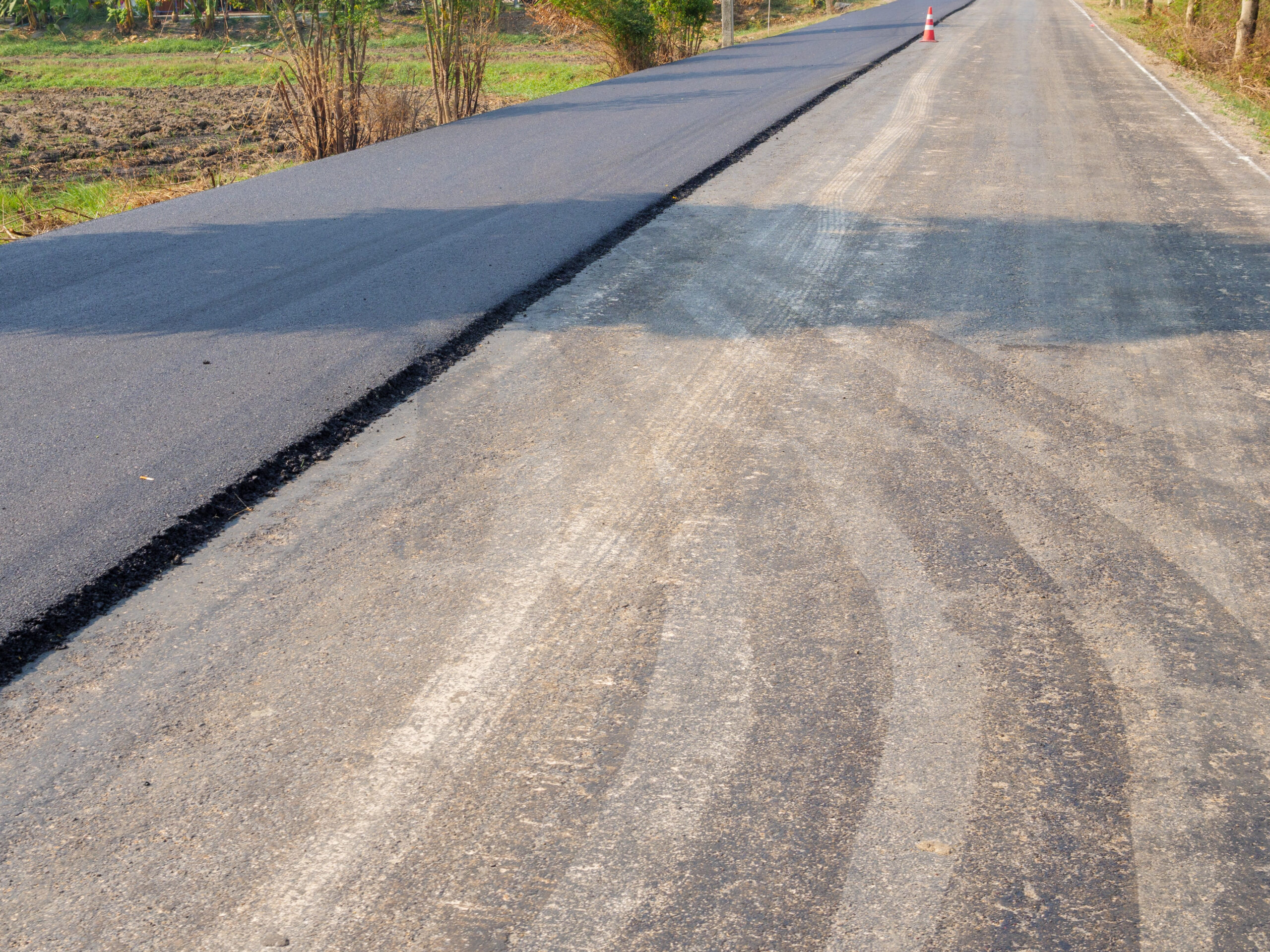
Understanding the warning signs of pavement distress helps you avoid expensive repairs and plan maintenance effectively. Both sealcoating and resurfacing have clear indicators that tell you when it is time to act.
Signs That Point to Sealcoating
If your asphalt has faded from a rich black to a dull gray, it is a sign of oxidation and surface aging. Minor cracks less than a quarter-inch wide, light surface wear, or loss of waterproofing all indicate the need for sealcoating. This preventive measure keeps the damage from worsening and restores the surface’s deep black color.
Signs That Point to Resurfacing
When cracks start spreading in an interconnected pattern, commonly referred to as alligator cracking, or when you notice multiple potholes, uneven patches, or standing water, resurfacing becomes necessary. These problems indicate underlying structural damage that cannot be solved with sealcoating alone.
When to Get a Professional Inspection
If you are uncertain about the condition of your pavement, schedule a professional inspection. Contractors can identify hidden base issues, measure the severity of cracking, and recommend the best course of action. A professional opinion can save you from wasting money on ineffective treatments.
How Sealcoating and Resurfacing are Applied and Typical Downtime
Sealcoating is a relatively quick process; however, proper preparation and application are required to achieve long-lasting results. Here’s how the application process goes for both asphalt repair methods:
Sealcoating Steps and Curing Time
The job begins with thoroughly cleaning the surface. Contractors sweep away debris, power wash the area, and prime oil spots. Next, they fill cracks with hot or cold rubberized filler. Once the surface is ready, they apply one or two coats of liquid sealant.
After application, the surface needs to dry and then cure. Typical cure windows range from 24 to 48 hours, although cooler or more humid conditions will lengthen this time and leave the surface tender for longer.
According to the Texas A&M Transportation Institute, the best practice is to schedule sealcoat work only when a rain-free period is expected and ambient temperatures fall within the acceptable range for the product being used.
Resurfacing Steps and Site Disruption
Resurfacing is a more complex process and requires additional time. Crews often start by milling damaged areas to create a uniform surface. They then repair potholes, patch weak spots, and address drainage concerns. The new asphalt is laid down in a thick layer and compacted with heavy rollers for a smooth finish.
Resurfacing projects typically take several days to complete, especially for large parking lots or busy roads. During a resurfacing job, you can expect temporary traffic reroutes or phased closures.
The Federal Highway Administration (FHWA) states that planning the job in warm, dry weather improves compaction and shortens the overall disruption.
Cost Comparison for Sealcoating and Resurfacing per Square Foot
Typical Price Ranges
Sealcoating Services is the more affordable option, usually costing between $0.15 and $0.25 per square foot. Resurfacing is a bigger investment, averaging $2 to $6 per square foot depending on project size, location, and preparation work.
Long-Term Cost Implications
While resurfacing costs more upfront, it adds a decade or more to your pavement’s lifespan. Sealcoating, though cheaper, needs to be reapplied regularly. The key is to choose the right service at the right time. Applying sealcoat to structurally damaged pavement is a waste of money, while postponing resurfacing often results in full replacement costs later.
Lifespan and Maintenance After Sealcoating and Resurfacing
After Sealcoating Care

Sealcoating should be reapplied every two to three years. Regular sweeping, crack filling, and prompt repairs of small problem areas will help keep your pavement in excellent shape. Avoid parking heavy vehicles or machinery on freshly sealed surfaces for at least two days to prevent scuffing.
After Resurfacing Care
Resurfacing can add 10 to 15 years to the life of your asphalt. However, it still needs maintenance. Applying a sealcoat a year after resurfacing helps preserve the new surface. Regular inspections, effective drainage management, and occasional crack filling will help maintain your investment in good condition for the long term.
Best Weather and Seasonal Timing for Pavement Work
Timing plays a big role in the success of sealcoating and resurfacing. Both treatments need warm, dry weather to bond correctly. For sealcoating, the best temperatures range between 50 and 85 degrees Fahrenheit, with no rain for at least 24 to 48 hours.
Resurfacing also benefits from similar conditions, as asphalt compacts best when applied in warm weather. In regions with freezing winters, you should plan major work during late spring, summer, or early fall. Scheduling your project during the right season not only improves results but also helps contractors work more efficiently, reducing labor costs.
Environmental Impact and Material Choices for Pavement Work
Sealer Types and Local Rules
Coal tar sealers are strong and long-lasting, but many areas limit or ban their use because of environmental concerns. Instead, asphalt-based sealers are more common. They’re safer for people, better for the environment, and do a great job protecting pavement from sun damage. Before picking a sealer, take a moment to check your local rules to avoid any surprises.
Recycled Asphalt and Sustainability Considerations
Resurfacing often utilizes recycled asphalt pavement (RAP), which helps reduce landfill waste and makes projects more affordable. Additionally, selecting recycled materials is a great way to reduce the carbon footprint of paving work. If you’re looking for eco-friendly options, ask your contractor about the amount of RAP they use and sealants that are safer for the environment.
According to the National Asphalt Pavement Association, over 99% of reclaimed asphalt pavement (RAP) is reused in new asphalt mixes, making asphalt one of the most recycled materials in the U.S. This not only cuts down on landfill waste but also reduces the environmental footprint of paving projects.
Before and After Visuals That Show the Real Difference

Visuals are powerful for understanding how each treatment transforms your pavement. Sealcoating creates a dramatic, instant improvement by refreshing the rich black color of asphalt. It is the perfect option for boosting curb appeal without major construction. Resurfacing offers an even more noticeable transformation.
By replacing the top layer of asphalt, resurfacing smooths uneven surfaces, improves drainage, and gives the look of a brand-new installation. Reviewing before-and-after photos can also help you choose a contractor.
Many paving companies showcase their work in portfolios that demonstrate their expertise and quality. When investing in a significant project, such as resurfacing, visuals can give you confidence in your choice and help you understand the long-term value of the work.
How to Choose Between Sealcoating and Resurfacing? Your Decision Made Simple
Quick DIY Checklist for Homeowners
- Faded gray color with minor cracks: Sealcoating
- Rough surface texture but no potholes: Sealcoating
- Large potholes, rutting, or alligator cracking: Resurfacing
- Uneven patches or pooling water: Resurfacing
What to Ask a Contractor
Always ask for details about materials, warranty, and preparation work included in the estimate. Understanding whether base repair or milling is part of the project will help you compare quotes accurately.
Mixed Approach Options
In some cases, combining both services delivers the best results. For example, you may choose resurfacing now and then apply sealcoat regularly to extend its life. A qualified contractor can help create a custom maintenance plan that balances cost, performance, and aesthetics.
Protect and Restore Your Asphalt with Expert Care
Sealcoating adds a strong layer of protection that helps your pavement last longer, prevents costly damage, and keeps your property looking clean and well-maintained. Resurfacing takes it a step further by repairing worn or damaged asphalt, restoring both its strength and smooth appearance. Taking time to evaluate your driveway or parking lot now can save you money, stop bigger problems later, and keep your pavement safe and reliable for years.
If you’re noticing cracks, fading, or other signs of wear, Asphalt Coatings Company is here to help. Our team offers expert inspections, honest advice, and top-quality sealcoating and resurfacing services designed for your property. Reach out today for a free quote, and let us create a custom plan to protect your investment and keep your pavement in great shape.
Frequently Asked Questions
Should I seal or resurface my driveway?
If your driveway is mostly faded with small surface cracks, sealcoating is the right, cost-effective choice to protect and restore appearance. If you notice alligator cracking, multiple potholes, rutting, or standing water, resurfacing is necessary to address structural damage. When in doubt, have a pro inspect the base and recommend the correct treatment.
How long does a resurfaced asphalt driveway last?
A properly done resurfacing typically lasts about 10 to 15 years. Lifespan depends on traffic, climate, base condition, and follow-up maintenance, such as crack filling and occasional seal coating. Good installation quality and proper drainage can add years to that estimate.
What does resurfacing a driveway mean?
Resurfacing means applying a new layer of hot mix asphalt over the existing pavement after any needed repairs. The job may include milling the top layer, patching potholes, and compacting the new asphalt to restore smoothness and strength. It is a middle ground between routine maintenance and full replacement.
How much does it cost to resurface asphalt?
Typical resurfacing costs run roughly two to six dollars per square foot, though local prices vary. The final cost depends on the overlay thickness, site preparation, any milling or base repairs, and access or haul fees. Get at least two written quotes from local contractors for an accurate estimate.

